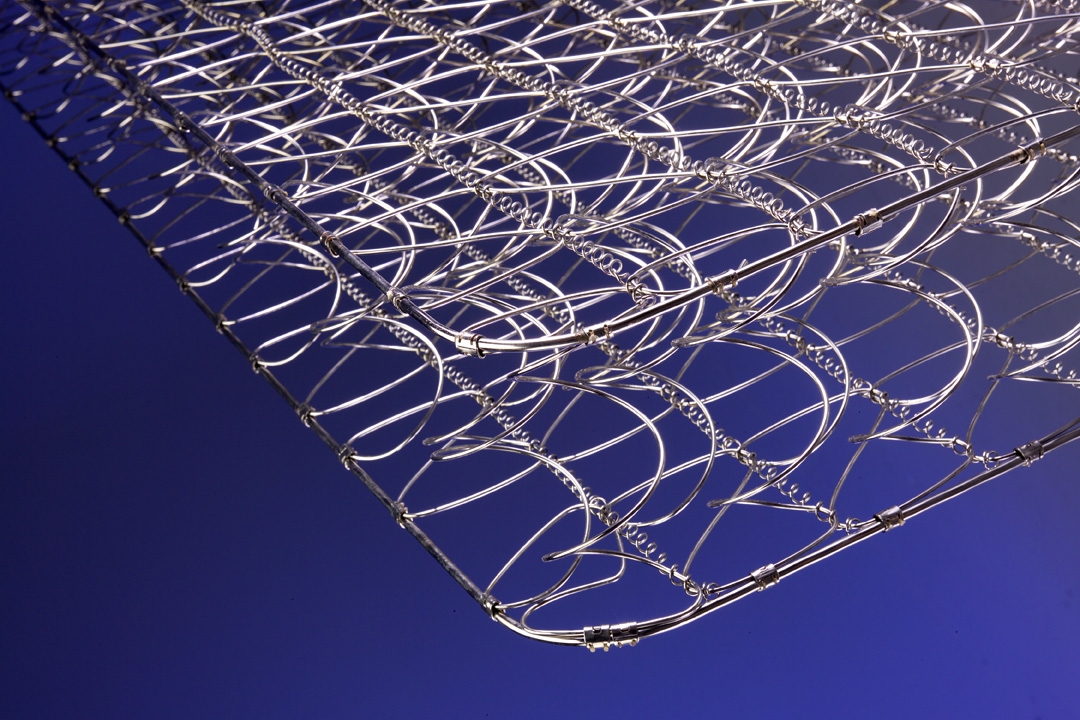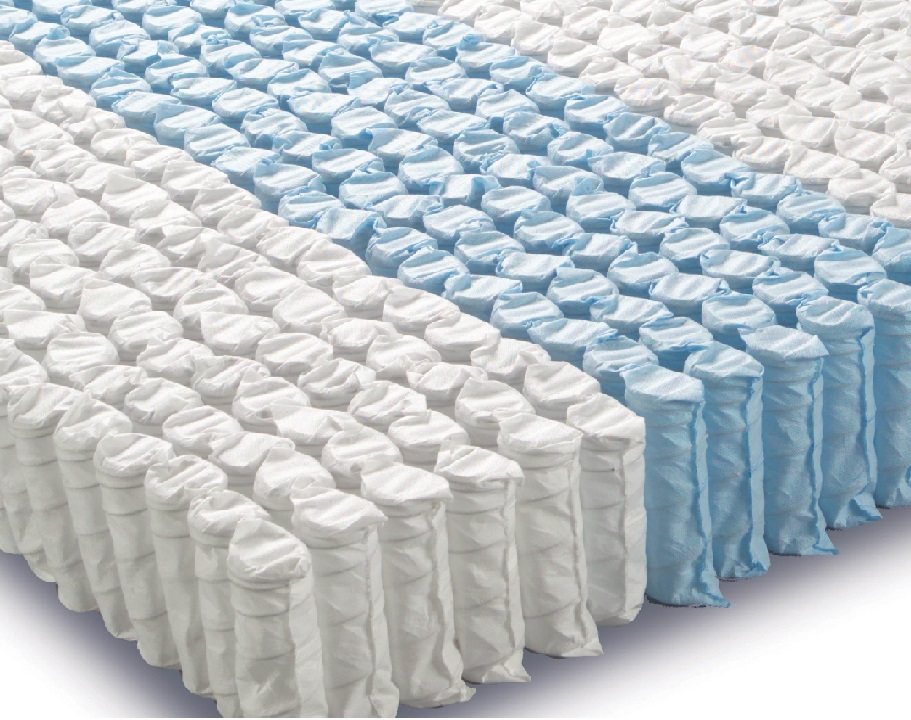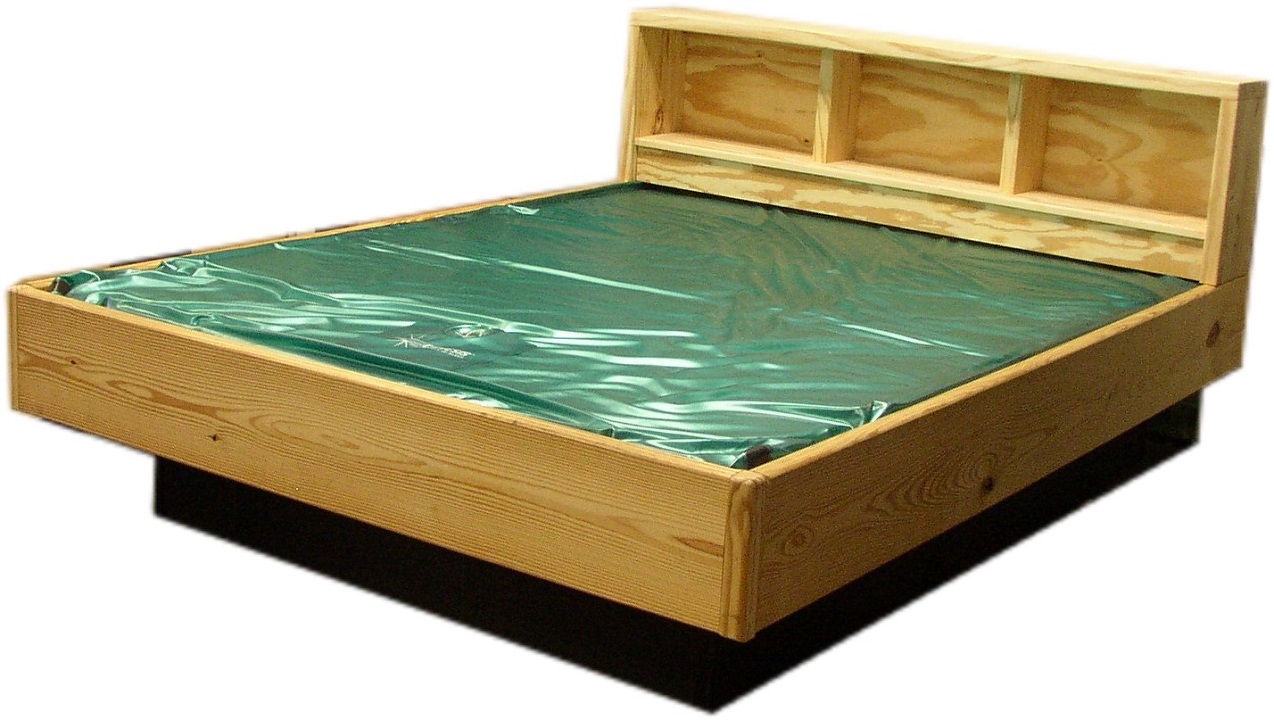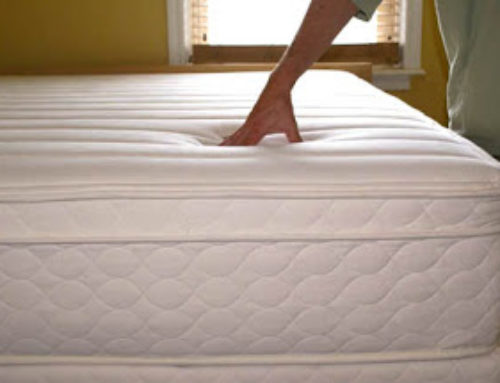Last week, we started discussing the history of mattresses and what all is inside those white rectangles you see online, in commercials, and in the store. It’s important to understand what all is in a mattress and how it is constructed in order to decide which sleep system will provide you with the best sleep possible. Mattresses are constructed from the bottom up, and so our articles follow the same format. In the previous article, we talked about the rock solid foundation to your mattress: the frame and boxes. This week, we explore the bottom part of the mattress that supports you while you sleep.
“The Support that Keeps on Giving”
The base layer of the mattress provides support. Our spine wants to stay straight 24 hours a day, 7 days a week, 365 days a year. Whether we are standing, sitting, walking, running, and yes, even when we are sleeping. If our spine is not straight, then our back muscles kick in. That is why many people wake up feeling sore and feeling like they need to stretch, because their backs have been working all night! The support layer is designed to prevent this problem. Over the years, many different types of support layers have been developed. Historically, people used straw, feathers, and other soft materials lying around and stuffed them in a bag. While providing some comfort from the hard wooden, or dirt, floors, they did not provide much support. In the modern age, support layers can be defined according to several categories: continuous coil, pocketed coil, waterbed, air mattress, and foam mattress.
Continuous Coils

Pocketed Coils

Continuous Coils
(pictured top left)
The traditional, and most commonly known, form of support layer is the continuous coil. Also referred to as vertical or Bonnell coil, all these systems coils are connected at the top or with one wire that runs continuously throughout the bed. With these coil systems, and all coils in general, the longevity of the system is based upon the thickness and number of twists in the coil or wire. In terms of thickness, the lower the gauge, the thicker the wire. For example, a 12 gauge coil system has thicker coils than a 15 gauge system. Generally speaking, the thicker the gauge, the firmer the mattress is going to feel. The spring also has turns in it. The more turns in the spring, the firmer it is. In both cases, the firmer spring will last longer because it will retain its’ form longer.
In the beginning, continuous coil systems had an “hourglass” spring construction where the top was thicker than the bottom. Today, many manufacturer’s still follow this model. Some mattresses however have found a way to move some of the coils closer together by changing the way they are tied together. This is done to try and focus coils in one area of the mattress to provide more support. This is generally done in the center of the mattress in order to provide more support for the back (the area where it is needed the most!). Continuous Coil systems were the mainstay for mattresses for many years until the advent of the pocketed coil system was developed.
Pocketed Coils
(pictured top right)
Pioneered by James Marshall in 1899, the pocketed coil system uses coils that are connected in the middle instead of on top. By doing this, it created several benefits. One, the coils react more to the user. As you lay on the mattress, only the coils that you lay on are affected. This helped to reduce pressure points. In addition, the springs also reduced motion transfer from side to side. Since only the coils in use receive tension, the other coils remain in the same position until used. Therefore, people are less likely to wake their significant other when getting up or moving around in the middle of the night. This is different from the continuous coil where every coil is affected no matter which side of the mattress you are in. This can create a “bouncy” feeling when you move around on it.
At first, the pocketed coil system was encased in foam. This was a change from the continuous coil system where the sides of the mattress had a metal bar on the sides. The goal with the foam encasement was to provide more sleeping surface to the mattress. However, manufacturer’s have created a new system called a “quantum edge” system. In these systems, the foam encasement is replaced with a layer of pocketed coils to give greater side support. It is also important to note that pocketed coil systems are able to put thicker gauge coils in the center of the mattress to provide extra back support. This provides more back support than the continuous coil system does.
Waterbed

Air Mattress

Foam Mattress

Waterbed
As time progressed, manufacturer’s tried to move away from coil systems. One of the first alternatives they created was waterbeds. These removed all springs for support and instead filled plastic bags with water. This created a unique feel to the mattress and removed all pressure points. Most modern manufacturer’s do not carry them anymore however due to a decline in popularity.
Air Mattress
Another alternative to the spring mattress was the air mattress. Similar to the waterbed, the difference became that they were filled with air instead of water. Air mattresses still retain their popularity because people are able to adjust the firmness of their mattress by adding or removing air in the bladder. In the current market, many air mattresses also have layers of foam that they can add to them to provide comfort.
Foam Mattress
The most recent alternative to spring mattresses is the foam mattress. These mattresses replace springs with a high density foam core. Just like with waterbeds and air mattresses, all foam beds have no pressure points. In addition, there is no motion transfer from side to side. This was popularized with commercials showing one person jumping on the bed while a glass of wine sat on the other end without spilling. Foam mattresses provide a unique feel and conform solely to your body. The only thing you have to be careful of is that foam mattresses will sleep warmer than a spring mattress. This is due to the fact that good quality foam does not have a lot of air pockets nor does it allow air to move through it. Spring mattresses have more air flow to keep things cooler. Today, many manufacturer’s use gel to keep the foam cooler or add performance fabrics to also keep things cooler at night.
The support layer of the mattress is there to make sure that you are supported throughout the night. Each has their benefits and can be better suited to your individual sleep needs. Next week, we will explore the final layer of the mattress, the comfort layer.
Thanks!
Adam Swift
Long’s Furniture World and Mattress
P.S. For more information about the support layer of mattresses, check out the articles below:
1. http://bettersleep.org/mattress-education/mattress-types/
2. https://www.sleep-geek.com/Articles/Article?articleId=2731
3. http://www.webmd.com/sleep-disorders/features/how-to-pick-your-perfect-mattress#2




